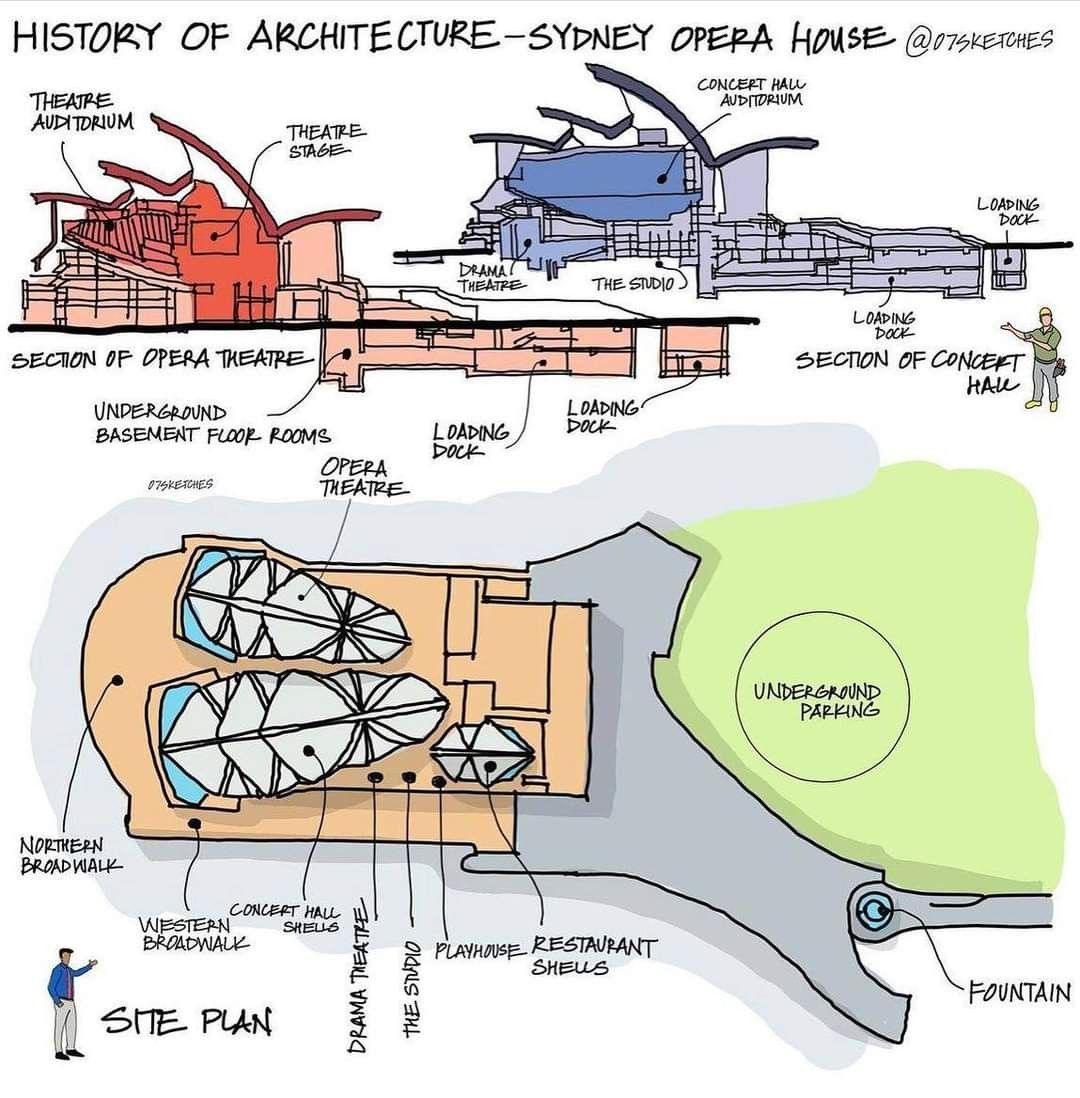Beyond its iconic sails, the Sydney Opera House reveals a hidden world of underground docks, theatres, and pathways—blending architecture, engineering, and performance into one of the greatest cultural landmarks on Earth.
The Sydney Opera House is one of the most recognizable architectural icons in the world, admired for its soaring sail-like shells that dominate the Sydney Harbour skyline. While most visitors marvel at its stunning roof design, few realize the complex network of spaces hidden beneath and around the structure. From underground parking and loading docks to multiple theatres and rehearsal studios, the Opera House is a living organism designed to serve as a global hub for performance and culture.
🏛️ The Grand Sections: Opera Theatre & Concert Hall
🔴 Opera Theatre
The Opera Theatre, located at the heart of the building, houses a vast auditorium with a carefully designed stage for world-class performances. The diagram reveals its underground basement floor rooms that accommodate everything from technical operations to performer support. Multiple loading docks ensure that heavy stage equipment and sets can be transported directly below the theatre without disrupting visitors.
🔵 Concert Hall
Adjacent to it is the Concert Hall, the largest interior space within the Opera House. With its striking acoustics and grand auditorium, it has hosted everything from symphony orchestras to global pop icons. The section diagram highlights its supporting spaces—studios, drama theatres, and additional loading docks—making it not just a single venue but part of an integrated performing arts ecosystem.
🗺️ The Site Plan: More Than a Building
The site plan shows how the Opera House connects with its surroundings:
- Northern & Western Broadwalks: Open-air pathways where visitors experience sweeping harbour views.
- Drama Theatre & The Studio: Smaller, intimate venues that allow experimental performances and rehearsals.
- Playhouse & Restaurant Shells: Blending dining with culture, giving guests the full Sydney Harbour experience.
- Underground Parking: Hidden beneath landscaped grounds, it keeps the exterior plaza uncluttered, maintaining the building’s sculptural purity.
- Fountain & Public Space: Enhancing the Opera House’s role as both a performance hub and a civic landmark.
🔧 Engineering Brilliance Beneath the Waves
What makes the Sydney Opera House extraordinary is not just its roof geometry inspired by a sphere, but also the logistical genius hidden underground. Engineers created a labyrinth of loading docks, technical rooms, and storage spaces, allowing seamless backstage operations without interfering with the visitor experience above ground.
🌍 A Global Symbol of Performance
Since its completion in 1973, the Sydney Opera House has become more than a theatre—it is a UNESCO World Heritage Site, a tourist attraction, and a cultural symbol of Australia. Each year, it hosts over 1,500 performances and attracts millions of visitors, proving that its architectural brilliance is matched by its vibrant cultural heartbeat.
📜 Conclusion
The Sydney Opera House is often remembered for its striking white sails, but the real story lies in the way architect Jørn Utzon envisioned a complete system—above, within, and below the structure. From the sweeping concert halls to the unseen tunnels and docks, every detail reflects a harmony of art, function, and engineering.
It is not merely a building; it is a city of performance under one roof—a true testament to what happens when vision, science, and culture converge.
